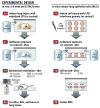Isoflurane Ameliorates Acute Lung Injury by Preserving Epithelial Tight Junction Integrity
- PMID: 26068207
- PMCID: PMC4510009
- DOI: 10.1097/ALN.0000000000000742
Isoflurane Ameliorates Acute Lung Injury by Preserving Epithelial Tight Junction Integrity
Abstract
Background: Isoflurane may be protective in preclinical models of lung injury, but its use in patients with lung injury remains controversial and the mechanism of its protective effects remains unclear. The authors hypothesized that this protection is mediated at the level of alveolar tight junctions and investigated the possibility in a two-hit model of lung injury that mirrors human acute respiratory distress syndrome.
Methods: Wild-type mice were treated with isoflurane 1 h after exposure to nebulized endotoxin (n = 8) or saline control (n = 9) and then allowed to recover for 24 h before mechanical ventilation (MV; tidal volume, 15 ml/kg, 2 h) producing ventilator-induced lung injury. Mouse lung epithelial cells were similarly treated with isoflurane 1 h after exposure to lipopolysaccharide. Cells were cyclically stretched the following day to mirror the MV protocol used in vivo.
Results: Mice treated with isoflurane following exposure to inhaled endotoxin and before MV exhibited significantly less physiologic lung dysfunction. These effects appeared to be mediated by decreased vascular leak, but not altered inflammatory indices. Mouse lung epithelial cells treated with lipopolysaccharide and cyclic stretch and lungs harvested from mice after treatment with lipopolysaccharide and MV had decreased levels of a key tight junction protein (i.e., zona occludens 1) that was rescued by isoflurane treatment.
Conclusions: Isoflurane rescued lung injury induced by a two-hit model of endotoxin exposure followed by MV by maintaining the integrity of the alveolar-capillary barrier possibly by modulating the expression of a key tight junction protein.
Conflict of interest statement
Competing Interests: The authors declare no competing interests.
Figures






Comment in
-
Anesthetics and Lung Injury: Old Research, New Insights.Anesthesiology. 2015 Aug;123(2):251-2. doi: 10.1097/ALN.0000000000000743. Anesthesiology. 2015. PMID: 26068208 No abstract available.
References
-
- ARDS Definition Task Force. Ranieri VM, Rubenfeld GD, Thompson BT, Ferguson ND, Caldwell E, Fan E, Camporota L, Slutsky AS. Acute respiratory distress syndrome: The Berlin Definition. JAMA. 2012;307:2526–33. - PubMed
-
- Rubenfeld GD, Caldwell E, Peabody E, Weaver J, Martin DP, Neff M, Stern EJ, Hudson LD. Incidence and outcomes of acute lung injury. N Engl J Med. 2005;353:1685–93. - PubMed
-
- Ware LB, Matthay MA. The acute respiratory distress syndrome. N Engl J Med. 2000;342:1334–49. - PubMed
-
- Han X, Fink MP, Uchiyama T, Yang R, Delude RL. Increased iNOS activity is essential for pulmonary epithelial tight junction dysfunction in endotoxemic mice. Am J Physiol Lung Cell Mol Physiol. 2004;286:L259–67. - PubMed
-
- Tremblay LN, Slutsky AS. Ventilator-induced lung injury: From the bench to the bedside. Intensive Care Med. 2006;32:24–33. - PubMed
Publication types
MeSH terms
Substances
Grants and funding
LinkOut - more resources
Full Text Sources

